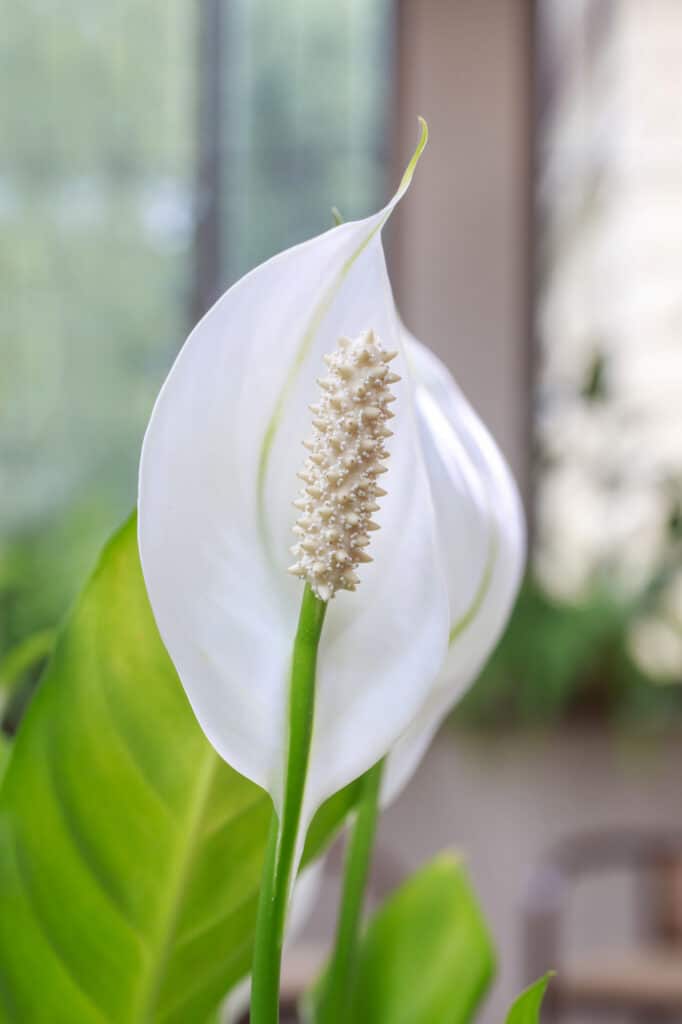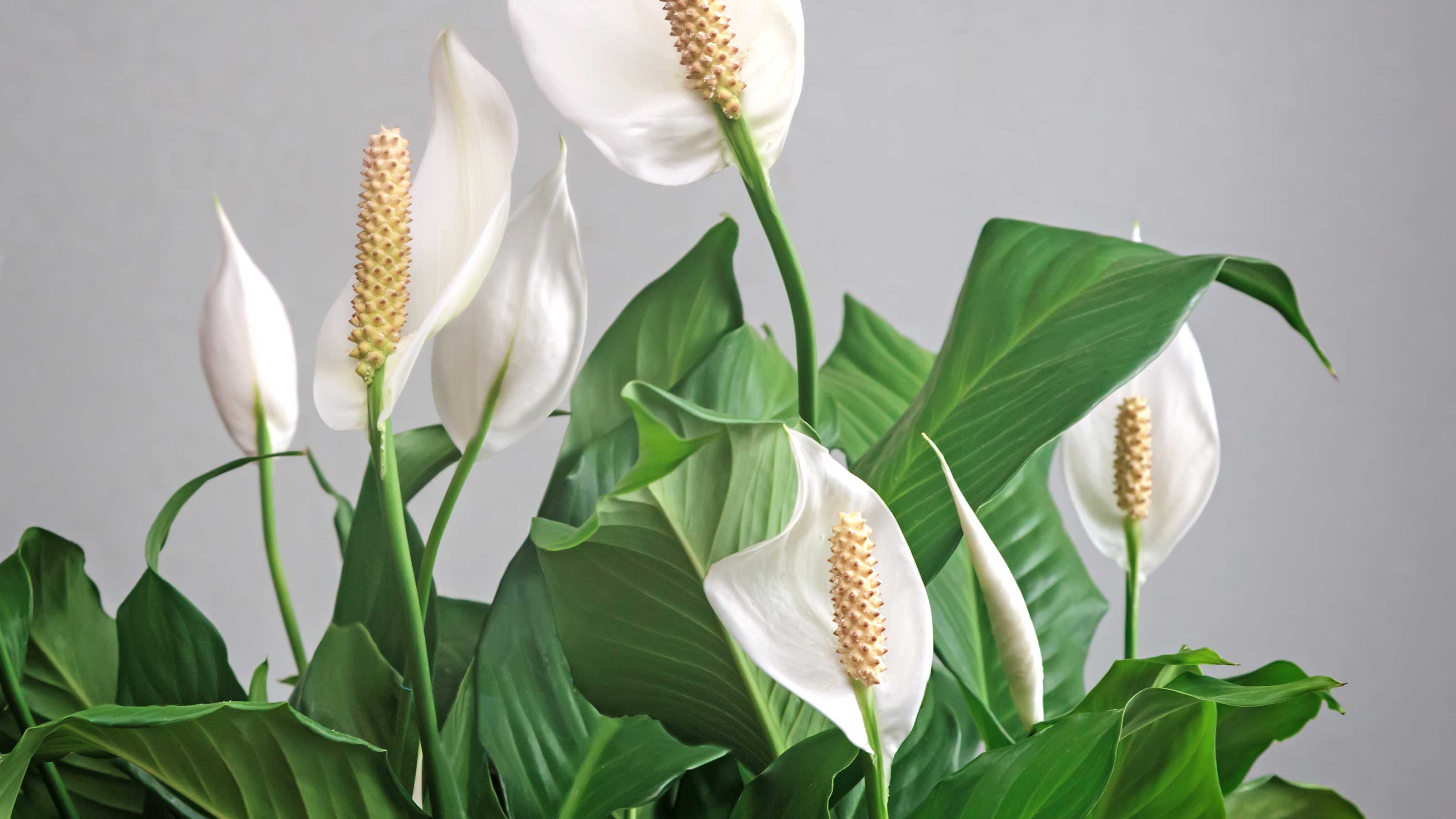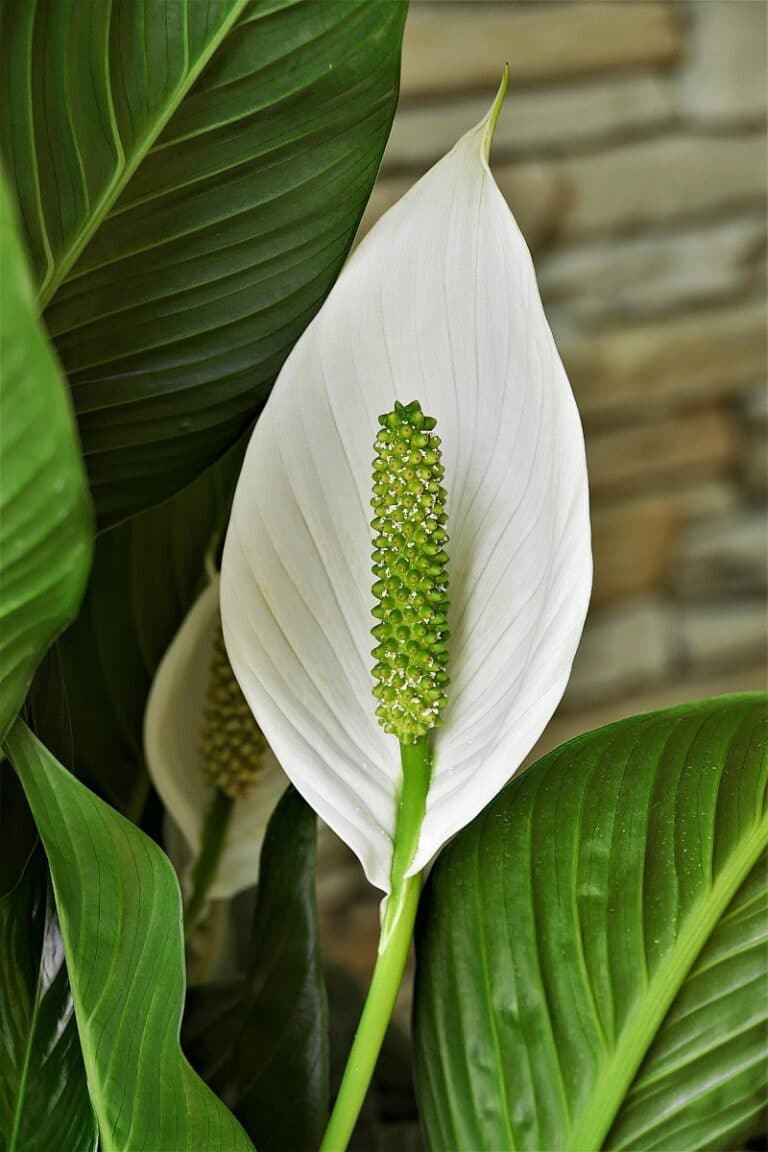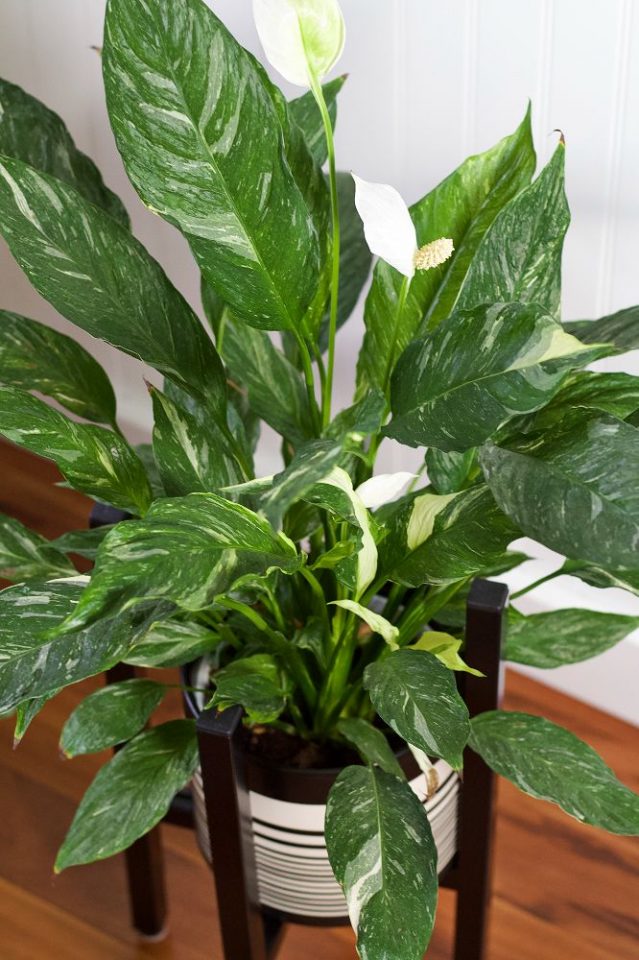Choosing the Right Container for Your Peace Lily
When it comes to potting a peace lily, selecting the right container is crucial for the plant’s health and growth. A well-chosen container can provide the necessary support and drainage for the plant’s roots to thrive. To ensure the best results, consider a container that is slightly larger than the peace lily’s current pot. This will give the roots room to grow and expand, promoting healthy development.
A container with good drainage is also essential to prevent waterlogged soil. Look for pots with built-in drainage holes or consider adding a layer of small rocks or broken pottery at the bottom of the container to improve drainage. This will help prevent root rot and other problems associated with overwatering.
Peace lilies prefer containers that are wider than they are deep, as this allows the roots to spread out and absorb nutrients more efficiently. A container with a wide mouth also makes it easier to repot the plant when necessary. When selecting a container, keep in mind that peace lilies can grow quite large, so choose a pot that will accommodate the plant’s mature size.
Some popular materials for peace lily containers include ceramic, terracotta, and plastic. Ceramic and terracotta pots are popular choices due to their natural, breathable properties, which can help regulate soil moisture. Plastic pots, on the other hand, are often less expensive and can be just as effective, provided they have adequate drainage holes.
Ultimately, the right container for your peace lily will depend on your personal preferences and the specific needs of your plant. By choosing a container that provides good drainage, adequate room for growth, and a comfortable environment, you’ll be well on your way to learning how to pot a peace lily and enjoying the many benefits of these beautiful plants.
Preparing the Peace Lily for Repotting
Before repotting a peace lily, it’s essential to prepare the plant properly to minimize stress and ensure a smooth transition. Start by watering the plant thoroughly a day or two before repotting. This will help loosen the soil and make it easier to remove the plant from its container.
Next, carefully remove the peace lily from its current container. If the plant is stuck, gently rock the container back and forth to loosen the soil. Once the plant is out, inspect the roots and trim any dead or dying roots with sterile scissors or pruning shears. This will help prevent the spread of disease and encourage healthy growth.
Also, take this opportunity to inspect the leaves and stems for any signs of damage or disease. Remove any dead or dying leaves or stems to prevent the spread of disease and encourage healthy growth. Use sterile scissors or pruning shears to make clean cuts, and make sure to disinfect the tools between cuts to prevent the spread of disease.
After trimming the roots and removing any dead or dying leaves or stems, gently shake off any excess soil from the roots. This will help remove any old, depleted soil and make it easier to plant the peace lily in its new container.
By properly preparing the peace lily for repotting, you’ll be able to give the plant the best possible start in its new container. Remember to handle the plant gently and carefully to minimize stress and prevent damage. With the right preparation and care, you’ll be able to enjoy the beauty and benefits of your peace lily for years to come.
When learning how to pot a peace lily, it’s essential to remember that preparation is key. By taking the time to properly prepare the plant, you’ll be able to ensure a successful repotting and give the plant the best possible start in its new container.
Selecting the Right Potting Mix for Your Peace Lily
When it comes to potting a peace lily, using the right potting mix is crucial for the plant’s health and growth. A high-quality potting mix specifically designed for tropical plants like peace lilies can make all the difference in the plant’s ability to thrive.
A good potting mix for peace lilies should contain ingredients like peat moss, perlite, and vermiculite. Peat moss helps to retain moisture in the soil, while perlite and vermiculite improve drainage and aeration. This combination of ingredients will help to create a well-balanced potting mix that will support the peace lily’s growth.
It’s also important to choose a potting mix that is free of weeds and pests. Look for a mix that is specifically labeled as “weed-free” or “sterile” to ensure that it won’t introduce any unwanted pests or diseases into your peace lily’s soil.
When selecting a potting mix, avoid using garden soil from your outdoor garden. Garden soil can be too dense and may contain pests or diseases that can harm your peace lily. Instead, opt for a high-quality potting mix that is specifically designed for indoor plants like peace lilies.
Some popular potting mixes for peace lilies include Miracle-Gro Indoor Potting Mix and Black Kow All Purpose Potting Mix. These mixes are specifically designed to meet the needs of tropical plants like peace lilies and can help to promote healthy growth and development.
By using the right potting mix, you’ll be able to give your peace lily the best possible start in its new container. Remember to follow the instructions on the potting mix label for the correct ratio of mix to water, and avoid overwatering your peace lily. With the right potting mix and proper care, you’ll be able to enjoy the beauty and benefits of your peace lily for years to come.
When learning how to pot a peace lily, it’s essential to remember that the right potting mix is just one part of the equation. By combining a high-quality potting mix with proper care and attention, you’ll be able to create a thriving and beautiful peace lily plant.
How to Repot a Peace Lily Plant
Repotting a peace lily plant can seem intimidating, but with the right steps, you can successfully transfer your plant to a new container. Here’s a step-by-step guide on how to repot a peace lily plant:
Step 1: Gently Remove the Plant from Its Current Container
Carefully lift the peace lily plant out of its current container, taking care not to damage the roots or disturb the soil. If the plant is stuck, gently rock the container back and forth to loosen the soil.
Step 2: Inspect the Roots and Trim If Necessary
Inspect the roots of the peace lily plant and trim any dead or dying roots with sterile scissors or pruning shears. This will help prevent the spread of disease and encourage healthy growth.
Step 3: Prepare the New Container
Before placing the peace lily plant in its new container, make sure the container is clean and free of any debris. Add a layer of fresh potting mix to the bottom of the container, leaving enough space for the plant’s roots to grow.
Step 4: Place the Plant in the New Container
Gently place the peace lily plant in the new container, making sure the soil level is the same as it was in the previous container. Add fresh potting mix around the roots, gently firming the mix in place to prevent settling.
Step 5: Water the Plant
Water the peace lily plant thoroughly after repotting, making sure the soil is moist but not waterlogged. This will help the plant settle into its new container and reduce stress.
By following these steps, you can successfully repot your peace lily plant and give it the best possible start in its new container. Remember to provide proper care and attention, including watering, fertilizing, and pruning, to keep your peace lily plant thriving.
Learning how to pot a peace lily plant is a valuable skill that can help you keep your plant healthy and thriving. By following these steps and providing proper care, you can enjoy the beauty and benefits of your peace lily plant for years to come.
Watering and Caring for Your Newly Potted Peace Lily
After repotting your peace lily, it’s essential to provide the right care to ensure the plant thrives in its new container. Watering is one of the most critical aspects of peace lily care, and it’s essential to get it right.
Water your peace lily plant thoroughly after repotting, making sure the soil is moist but not waterlogged. Check the soil moisture by sticking your finger into the soil up to the first knuckle. If the soil feels dry, it’s time to water. If it’s already moist, wait a few more days before watering again.
Peace lilies prefer high humidity, typically above 50%. To maintain the right humidity level, you can place the plant on a tray filled with water and pebbles or use a humidifier nearby. This will help keep the air around the plant moist and prevent dryness.
Fertilizing your peace lily plant is also crucial for its growth and development. Use a balanced, water-soluble fertilizer (20-20-20) and follow the instructions on the label for the recommended dosage. Fertilize your peace lily plant once a month during the growing season (spring and summer) and skip fertilizing during the dormant season (fall and winter).
Another essential aspect of peace lily care is pruning. Remove any dead or dying leaves or flowers to maintain the plant’s appearance and prevent the spread of disease. Use sterile scissors or pruning shears to make clean cuts, and make sure to disinfect the tools between cuts to prevent the spread of disease.
By following these care tips, you’ll be able to provide your peace lily plant with the right conditions to thrive in its new container. Remember to monitor your plant’s condition and adjust your care routine as needed.
Learning how to pot a peace lily plant is just the first step in becoming a successful peace lily parent. By providing the right care and attention, you’ll be able to enjoy the beauty and benefits of your peace lily plant for years to come.
Troubleshooting Common Problems When Potting a Peace Lily
When potting a peace lily, there are several common problems that may arise. By being aware of these potential issues, you can take steps to prevent them and ensure the health and well-being of your plant.
One common problem when potting a peace lily is root bound. This occurs when the plant’s roots have outgrown the container and need more room to expand. To prevent root bound, make sure to choose a container that is slightly larger than the plant’s current container. You can also gently prune the roots to encourage new growth and prevent the plant from becoming pot-bound.
Another common problem when potting a peace lily is overwatering. Peace lilies prefer well-draining soil and can be susceptible to root rot if the soil is too moist. To prevent overwatering, make sure to check the soil moisture regularly and only water the plant when the soil feels dry to the touch.
Underwatering is also a common problem when potting a peace lily. If the soil is too dry for an extended period, the plant may begin to suffer. To prevent underwatering, make sure to water the plant regularly and provide high humidity to keep the soil moist.
Other common problems when potting a peace lily include pests, diseases, and nutrient deficiencies. To prevent pests, make sure to inspect the plant regularly and treat any infestations promptly. To prevent diseases, make sure to provide good air circulation and avoid overwatering. To prevent nutrient deficiencies, make sure to fertilize the plant regularly with a balanced fertilizer.
By being aware of these common problems and taking steps to prevent them, you can ensure the health and well-being of your peace lily plant. Remember to monitor your plant’s condition regularly and adjust your care routine as needed.
Learning how to pot a peace lily plant is just the first step in becoming a successful peace lily parent. By being aware of common problems and taking steps to prevent them, you can enjoy the beauty and benefits of your peace lily plant for years to come.
Peace Lily Potting FAQs
Here are some frequently asked questions about potting peace lilies:
Q: How often should I repot my peace lily?
A: Peace lilies typically need to be repotted every 2-3 years, as their roots can become pot-bound and need more room to grow.
Q: What type of container should I use for my peace lily?
A: Choose a container that is well-draining and has enough room for the peace lily’s roots to grow. A pot that is slightly larger than the plant’s current container is ideal.
Q: How do I propagate new peace lily plants?
A: Peace lilies can be propagated by dividing the roots of a mature plant or by growing new plants from seed. Division is the most common method, as it allows you to create new plants with the same characteristics as the parent plant.
Q: Can I grow peace lilies outdoors?
A: Peace lilies are typically grown indoors, as they prefer bright, indirect light and high humidity. However, they can be grown outdoors in warm, tropical climates with high humidity.
Q: How do I care for my peace lily after repotting?
A: After repotting, make sure to water your peace lily thoroughly and provide high humidity to help the plant adjust to its new environment. Fertilize the plant regularly with a balanced fertilizer to promote healthy growth.
By following these tips and answering these frequently asked questions, you’ll be well on your way to becoming a successful peace lily parent. Remember to always do plenty of research and consult with experts if you have any further questions or concerns.
Learning how to pot a peace lily plant is just the first step in enjoying the beauty and benefits of these amazing plants. By providing the right care and attention, you can enjoy your peace lily plant for years to come.
Conclusion: Enjoy Your Thriving Peace Lily Plant
With the right potting and care, your peace lily plant can thrive and bring beauty and freshness to your home or office. By following the steps outlined in this article, you can learn how to pot a peace lily plant and provide the best possible care for your new plant.
Remember, proper potting and care are essential for the health and well-being of your peace lily plant. By choosing the right container, potting mix, and providing the right amount of water, humidity, and fertilizer, you can help your plant grow and thrive.
Don’t be discouraged if you encounter any problems or issues with your peace lily plant. With a little patience and practice, you can troubleshoot and solve any problems that may arise.
By following the tips and guidelines outlined in this article, you can enjoy the beauty and benefits of your peace lily plant for years to come. Whether you’re a seasoned plant enthusiast or just starting out, learning how to pot a peace lily plant is a great way to bring some greenery and freshness into your life.
So go ahead, give your peace lily plant the care and attention it deserves, and enjoy the many benefits it has to offer. With a little love and care, your peace lily plant can thrive and bring joy and beauty to your life.








